| Having trouble viewing this email? View it in your browser | | | |  | Preserving and Promoting Community Trails
in Western Pennsylvania | |
| | |
| | |    |   Building trail along a hillside  Removing an old blaze post 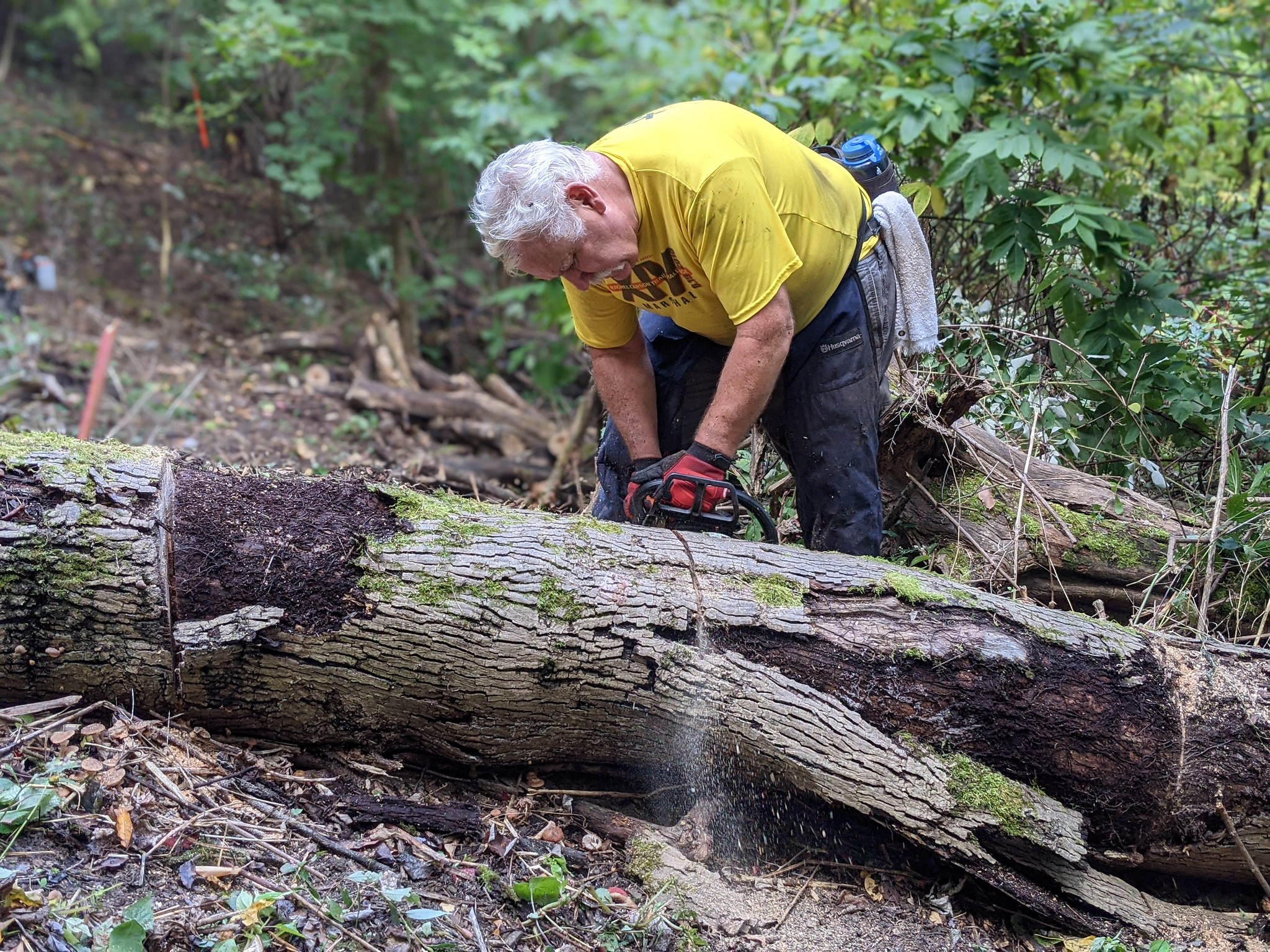 Clearing a fallen tree |  | Creating A Safer, More Enjoyable Rachel Carson Trail Experience By Mark Eyerman, RCT Manager We’ve had great success over the past few years moving the Rachel Carson Trail (RCT) off of roads and building new trail in the woods. During the project, which began in the fall of 2019, we’ve eliminated about 2.5 miles of road trail and added approximately 4 miles of new trail. The primary goal of the initiative has been the safety of our trail users, but a side benefit is that it’s allowed us to build high-quality trails that are more pleasant to use. The signature feature of the RCT has traditionally been a trail utilizing power/pipeline right-of-ways that go straight up a hill and straight down the other side, most often in direct sunlight and waist-high weeds. While this enabled a contiguous trail to be established in an urban environment, it may not always have been the best trail from an aesthetic or a maintenance standpoint. So when planning to move the trail off of the roads, we endeavored to create both an enjoyable trail to use and one that is practical to maintain. Deep woods afford trail users a cool, shaded environment and the tree canopy keeps ground vegetation to a minimum. With that in mind, whenever possible we tried to build the new sections of the trails in deep woods. We also tried to run the trail near interesting and historic features to enhance the trail experience. This is exemplified by the spectacular river vista seen on ‘the shelf’ section in the Murray Hill area. From a philosophical standpoint, the best trail experience is when you can travel along the trail with your head up, looking around and taking in all the natural beauty around you. The goal is to build trails where you don’t have to constantly look down to follow the trail and avoid obstacles. That’s why our team worked to build trails that are ‘relatively’ straight, flat and even. Given the terrain here in Western Pennsylvania, that was quite a challenge, but it was a guiding principle of our work. A straight trail is easy to follow and lets you look far ahead. When the trail avoids constant ups and downs and minimizes undulations (generally level), less attention is needed for your footfalls. An even trail -- one with a wide treadway that is free of roots, rocks and obstructions -- is another way to free trail users from the need to constantly watch each step. It isn’t always possible to build trails that are straight, flat and even in this area, but we certainly make the attempt where we can. Adhering to all of these aesthetic and philosophical criteria as we build out a trail is predicated upon gaining permission from the various landowners where the trail travels. This is another factor that can constrain our trail-building efforts. As you can see, moving the trail off of the road and into the woods is a complex challenge with many factors to consider. In a best-case scenario the process takes a year; from landowner negotiations to thorough scouting of an area to determine the options, deciding upon the final trail route and finally construction. It takes us hundreds of hours of work (500 or more) for each mile of new trail that we build. None of this work is possible without a large group of volunteers dedicated to making it a reality. We’ve done a great job over the past few years making the RCT safer and more enjoyable, and plans are already under way to continue this effort. We are always eager to welcome more help. Consider volunteering to help with planning, landowner negotiations, land acquisition, scouting or trail construction. Join the team and help us continue to improve the RCT for the enjoyment of all. |
  Celebrate the 25th Rachel Carson Trail Challenge! By Doug MacPhail Save the date! On Saturday, June 11, 2022, we will celebrate the 25th anniversary of the Rachel Carson Trail Challenge. The Challenge itself will take place the following Saturday, June 18, 2022.
The inaugural Challenge, held in 1996, was organized by Leo Stember and Jim Ritchie. There were 75 participants and only 5 finishers. Today, the Challenge regularly sells out with over 1,000 participants between the Full, Homestead, and Family and Friends events. Founded in 1992 as the Harmony Trails Council and later renamed the Rachel Carson Trails Conservancy, our all-volunteer organization is responsible for maintaining over 170 miles across the Harmony, Rachel Carson and Baker trails. The Conservancy is active with strategic land purchases and trail improvements to benefit the hiking community.
The “Bash” Celebration will be held at The Lodge at North Park. The festivities will begin at 4:30 p.m. and feature live music from Echo Valley Bluegrass, food, beverages, fun giveaways, trail trivia and more. Tickets will be available for $20 per person in advance, or $25 at the door (free for children under 12). Watch for the on-sale date in the near future! |  | 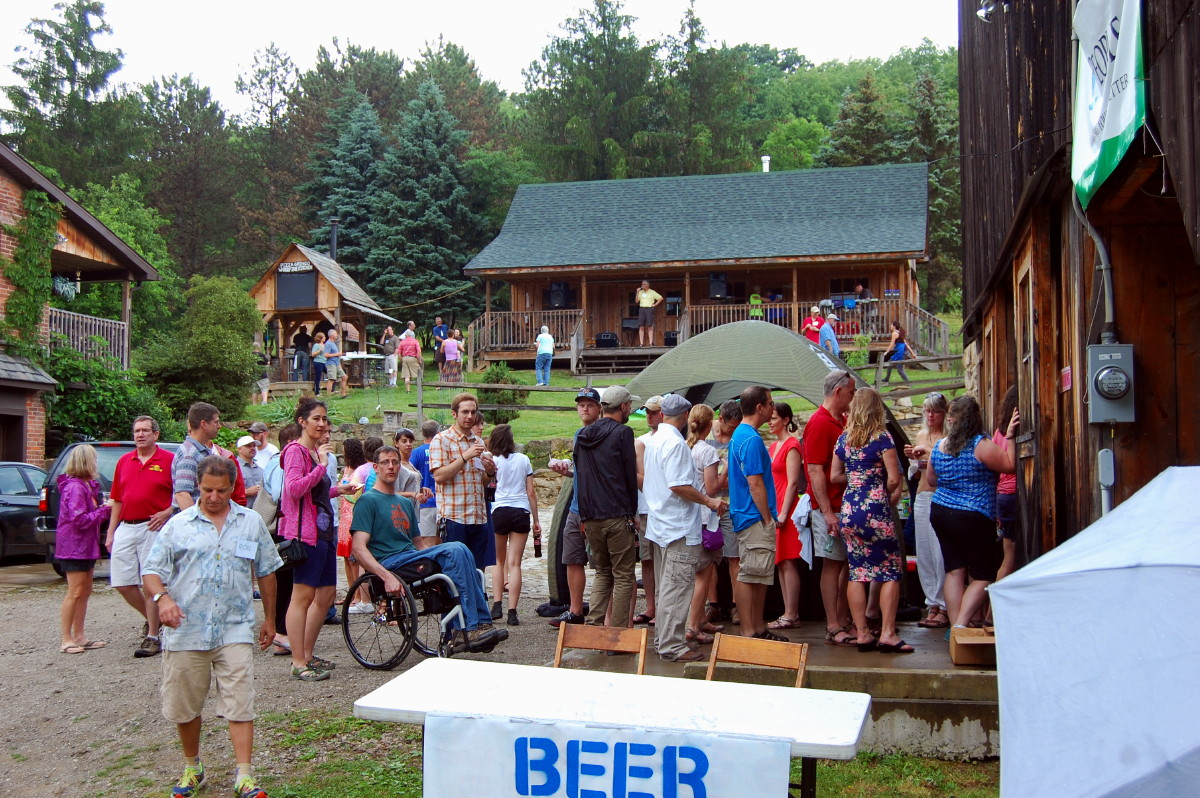 20th Celebration at White Oak Farm  The Allegheny Drifters at the 20th Celebration |
  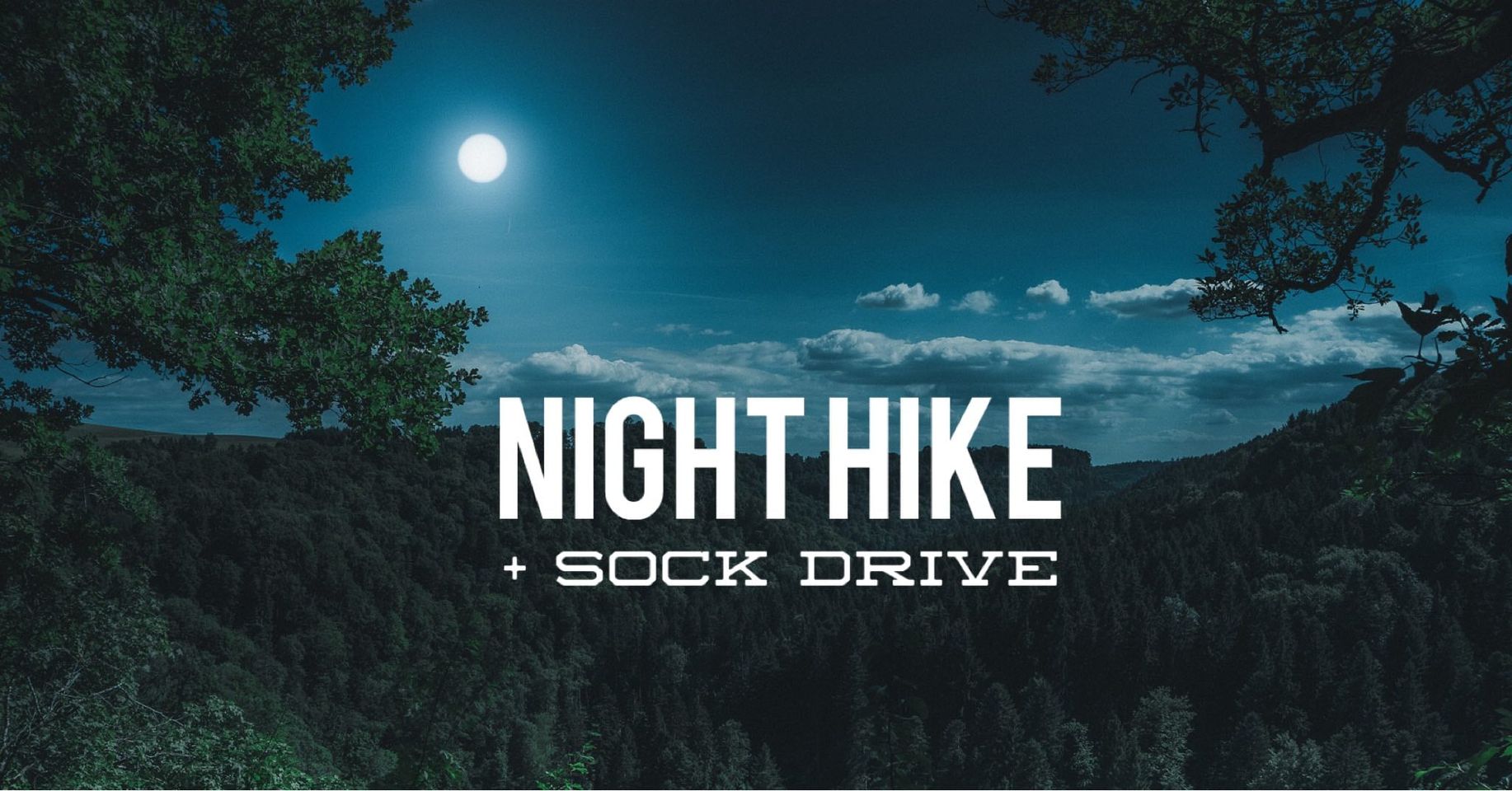 Sock Drive banner 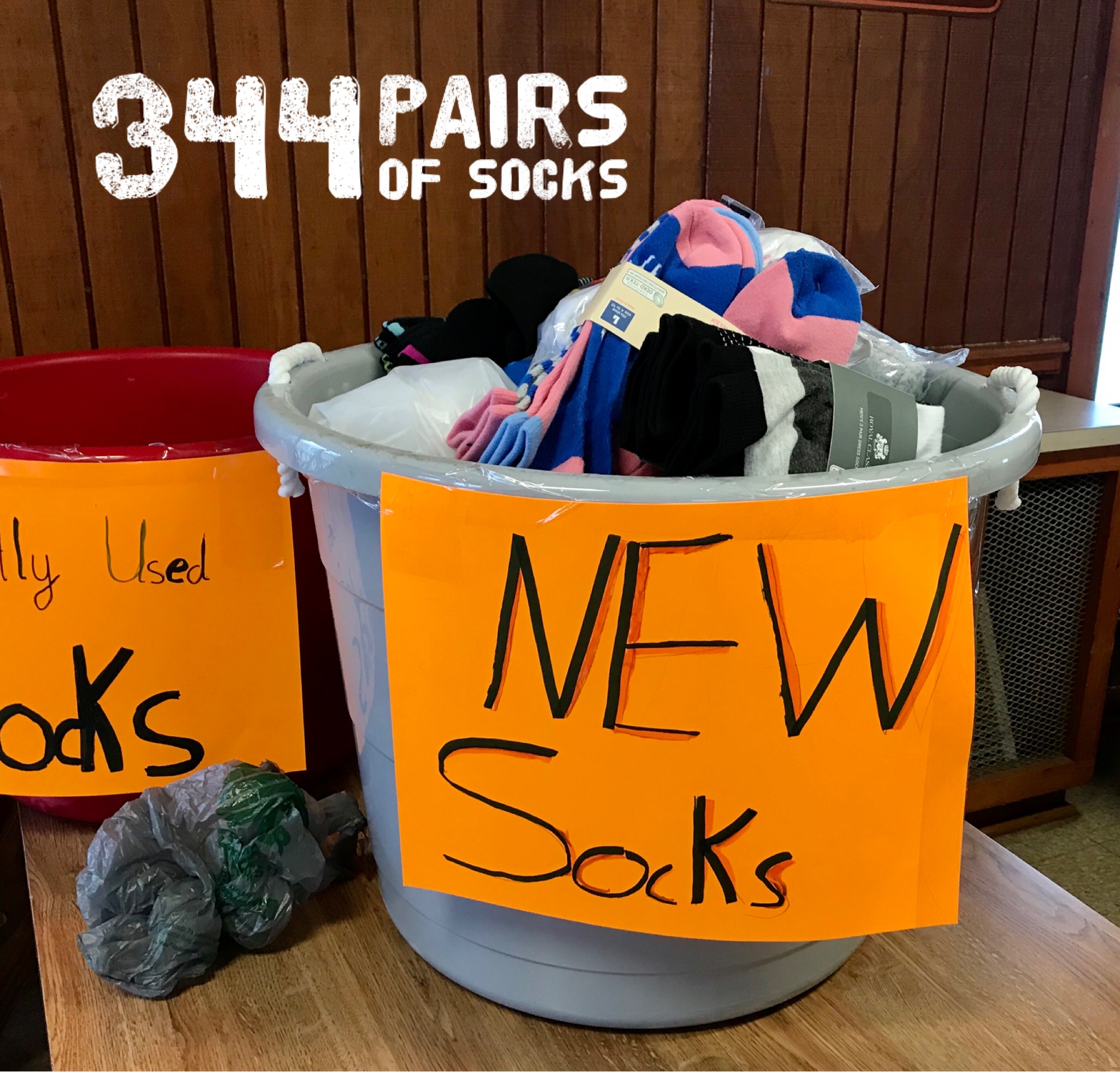 Sock Drive collection |  | Hikers Give Back By Kathleen Ganster Socks are the most requested item from the homeless and unfortunately, new socks are one of the least donated items. And one thing that Rachel hikers know is how important good socks can be! A few years ago, one of our volunteers came up with idea of collecting new and gently used socks during one of our hikes. We were overwhelmed at that first collection with over 300 pairs of socks being donated. Since that time, the RCTC and our hikers have donated over 1,200 pairs of socks to the homeless of Pittsburgh. That’s a lot of socks! While we had to take a break during the pandemic in our hikes and sock collection efforts, we once again gathered socks during our annual summer full moon hike this past July. And once again, we collected nearly 300 pairs of socks. The socks are now being distributed to the homeless living in Pittsburgh. A volunteer with our partner homeless ministry said that recipients are so grateful for the socks, especially with colder weather right around the corner. The RCTC and our homeless ministry partner thank you for your sock donations! New socks are always needed by the homeless and less fortunate. If you are interested in donating new socks, please contact kganster@verizon.net. |
  Interview with Miriam Fein, Nine-Time Baker Trail UltraChallenge Finisher By Amy Nelson The Baker Trail UltraChallenge is a grueling, 50-mile ultramarathon that takes place every August, rotating between three sections: North, Central and South. This year, Miriam Fein completed her 9th Baker Trail UltraChallenge, earning her third rolling pin, the coveted award which goes to a person who completes all three sections of the trail within the race time limits. She is the first person ever to earn three rolling pins and has accumulated 450 miles of Baker Trail running! I recently interviewed her via email.
- How old are you and where do you live? Tell me about your family.
I’m 40 years old, and I live in Long Island, NY. I’ve lived in NY my entire life. I have some wonderful trails near my home, but have fallen in love with the trails of Western Pennsylvania, which started with the Baker ultra. I have three kids- all teenagers now! My twins are 16 and my youngest is 13. They keep me on my toes- and very busy- as I’ve been a single parent most of their lives.
- What do you do for a living (when you’re not running)?
I’m a research scientist by day. I help manage a laboratory with a focus on autoimmune diseases, specifically Rheumatoid Arthritis. I have a background in cancer immunology, and after many years of doing basic research, I decided to take a more managerial role- without removing myself from academia, which I am passionate about. I also run a local grassroots science advocacy group to help communicate science to the general public called Science Advocacy of Long Island. It’s my own small way of giving back to the community- using my knowledge and background in a positive way. - When did you start ultrarunning?
I had been running marathons for many years, but burning out- and perpetually having knee pain. I ran a road 50k in 2013, but hated it. I signed up for a local trail run near my house, a 25k- it was the first time I ever ran on trails. That was just the beginning for me of learning about the trail and the ultra world. And I’ve never looked back. - When did you run the Baker Trail UltraChallenge for the first time?
The first year I ran Baker was the summer of 2013. I had never run a 50-miler before. My friend found the race online and suggested it to me. She told me about the ‘rolling pin’ and it sounded like a great challenge. We trained together that year, and drove out Friday of the race. We did not think about the traffic getting out of NY, and left far too late- we sat in hours of traffic and didn’t arrive to the farmhouse until midnight. We were so wiped that we didn’t set up a tent, just slept in the car for four hours before the race start. We both completed the race, but my friend struggled in the heat and was extremely nauseous. Back at the farmhouse, we asked Rebecca and Hisham where the nearest hotel was since we didn’t have a tent set up. They offered for us to stay at Hisham’s father’s house, just 5 minutes away. We were blown away by their kindness, and it turned out to be incredible to stay at the home of a world-renowned artist. I think a good part of the reason I’ve returned so many years is that family. - What other races have you done? What’s your favorite distance?
I have run several other ultras, mostly on the east coast. Several in upstate NY, including the Finger Lakes 50s,Bear Mountain, and Cayuga Trails. The Devil Dog Ultras in Virginia was where I ran my first 100k. I completed Laurel Highlands 70 miler this year, which is one of my absolute favorite trails. I even have that mountain range tattooed on my back. But working towards a 100-miler has been a more challenging journey. I’ve attempted Oil Creek 100 several times, even making it to 95 miles one year before timing out! Last year I finally completed the 100-mile distance at Burning River in Ohio- but am still working on getting my buckle at Oil Creek. That will be next year’s goal. For now, I love the 50-mile distance the best. It’s never easy, I can’t do it without training, but I don’t destroy my body (entirely), and can get back to my normal running routine in a decent amount of time. - How do you typically train for this race?
My training has changed a lot through the years. When I just started out, 50 miles was my goal. I transitioned from running roads to trails, and just went out for longer and longer weekend runs. My weekdays were always more rushed- I just would get a few miles before or after work. My weekly mileage was never very high, but I was always a very consistent runner. It was a lot harder when my kids were young- I always needed to find someone to watch them when I planned a long run. Now, I just tell them I’m going out for a bunch of hours and it doesn’t even faze them anymore! If I didn’t go out for my long weekend runs, they might think something was wrong. Over the years, this race has been folded into training for a 100 miler, so not specifically my goal race. The year of Covid- in 2020- my 100 miler was delayed until August- the week before Baker. Not wanting to break my streak, I figured I would try to run Baker anyway- if I could. I completed my 100-miler, barely walked all week, and showed up to run Baker the next Saturday. That year I wanted to quit more than any other year- I wasn’t sure my legs would let me continue moving- but somehow, I got it done. My body just remembered what it needed to do. I was pretty wiped after that feat, though! - Why do you like the Baker Trail UltraChallenge; what makes it different from other races?
I love the Baker for several reasons. The format of the race- with each section being a piece of the pie to earn the rolling pin- keeps people coming back for several years. I’ve met some wonderful runners here, and created a community in Western PA. Although some sections have more road than I would like, the beautiful rural landscapes make up for it, as it’s so different from my normal running routes. I don’t get to see cows or cornfields where I live! And the years we spend at the farmhouse are just the best- I have come to feel at home every time I pull into that house and set up my tent. Because I live so far, I always stay the night after the race (often I’m the only one still there) and spend a couple of hours in the morning with Hisham and Rebecca enjoying a few cups of coffee before heading home. - Which section of the Baker Trail is your favorite?
My favorite section to run is the north section, through Cook Forest. But the trade-off is that year is the one year we don’t stay at the farmhouse, and that’s where I get the feeling of the race and the ultra-community there. Where we hang out Friday night eating and drinking beers, and then camping out. So I guess I’d say that it’s good that it’s the section with the most beautiful trails! - What have you learned in all the years running this race?
Patience. Every run brings something different. Sometimes you contend with the weather, sometimes it’s some physical issue or a bad mental state. But running 50 miles, year after year, you learn to be patient with yourself. Some days you have better runs than others, but it’s all part of the journey. - When you enter the ‘pain cave’ what do you do to get yourself out of it?
I don’t define it as a pain cave. I feel more like I’m on a roller coaster when I run ultras. I have ups and downs throughout the day (and night). I’ve found that just riding out the rough patches, knowing I will feel better soon, tends to help. I try to keep moving (without focusing too much on how slowly I am going) until the feeling lifts. That, and finding something good to eat at an aid station! - Who do you admire in the ultrarunning community?
I wouldn’t say one person specifically- but I always admire the people I meet while out on the trails running and during races. I find that most people are out there because they simply love it, and it’s just a part of who they are. It’s very inspiring to hear people’s stories while I share some miles with them. I find that some of my closest relationships are with the people I run with regularly. Running long distance tends to leave people more raw and emotional, and leads to a closeness you can only find in the trail. - Do you have any hobbies outside of running?
Not really- I don’t have much time for anything else! For me, running has been not just a hobby, but a way for me to keep balance in my life and manage my stress. I often say, the more stress I have, the longer I want to run. Sometimes that can be counterproductive as I’ve definitely overdone it at points and pushed to the point of injury. But between family and work, I can safely say I don’t have any other hobbies! - Do you have any advice for women runners?
As someone who has been active all my life, I never really thought about women’s inequities in sports- until I began running long trail races. I realize I am often in the minority in many of the races I sign up for. Which is surprising to me, as women are particularly good at pushing themselves and tolerating pain. I have generally felt safe while running, even alone, but I know not everyone does. My advice to others is to do things that may push your boundaries, but also fulfill you and keep you grounded. I know that women, and often mothers, tend to put other people’s needs before our own. But remember that in order to give to others, we need to be on strong footing. I have always felt that I’m a better person- and parent- when I’m happy, and being out trail running gives me that.
- Will you keep running this race?
Well, when I received my third rolling pin after running this race 9 consecutive years, I said I was retiring from Baker. But… I can’t make any promises. Baker holds a special place in my heart. So, I suppose we’ll see next August. |  | 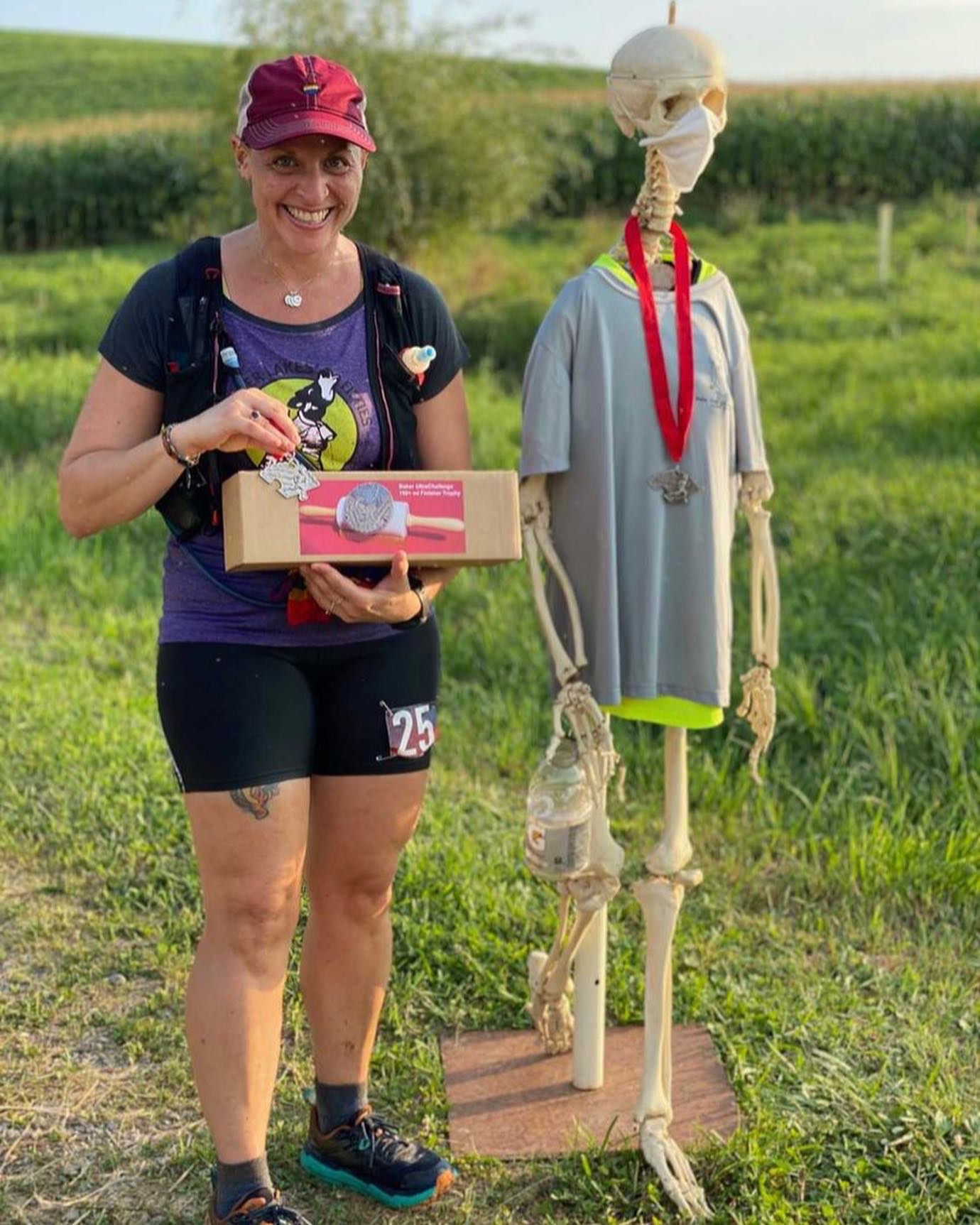 Miriam Fein at the 2021 UltraChallenge Finish 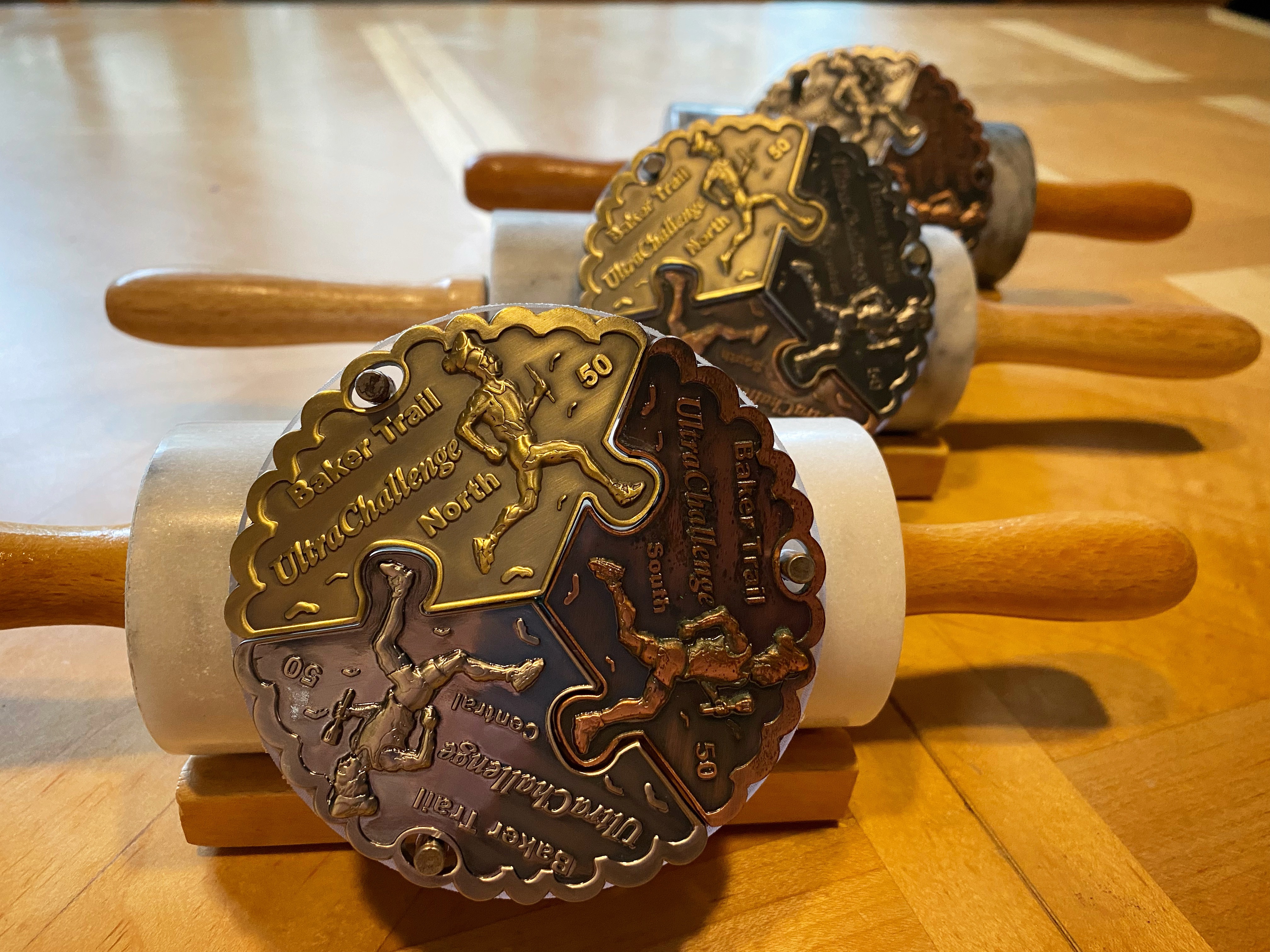 Miriam's rolling pin collection |
  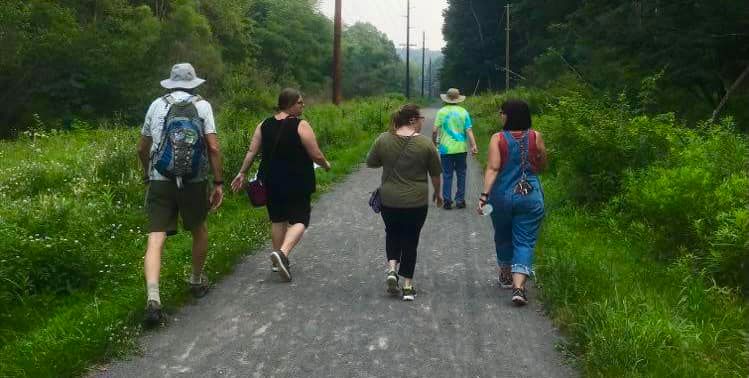 Not Forgotten hike on the Harmony Trail 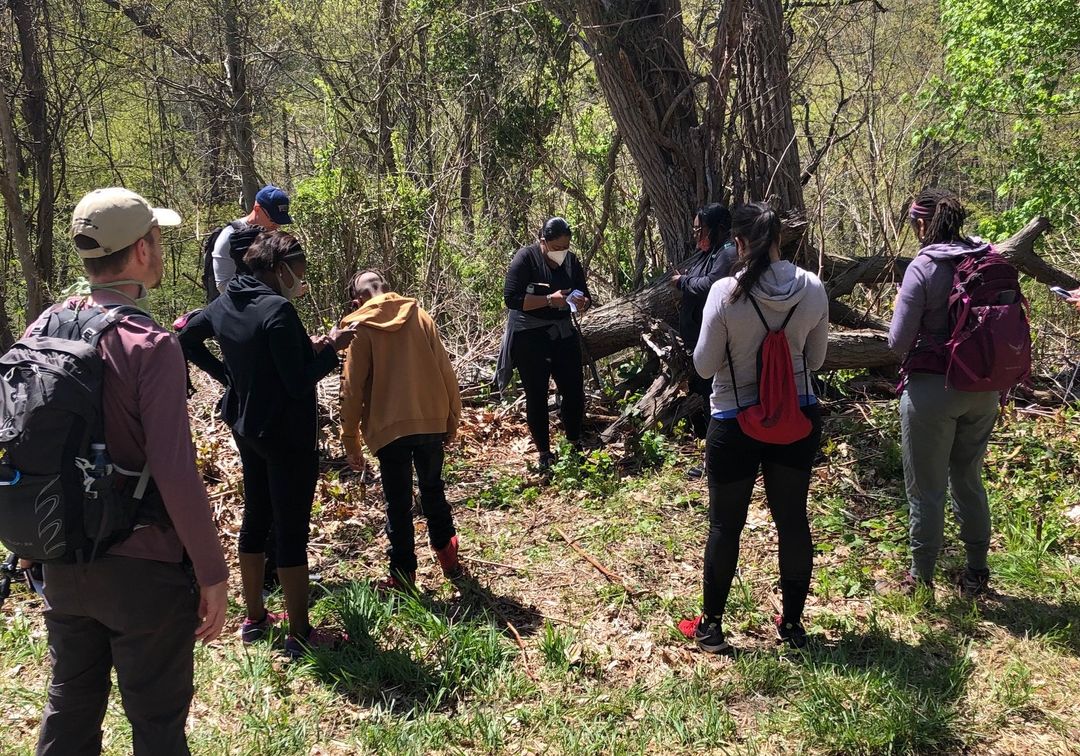 Outdoor Afro geocaching hike |  | Who is DEI and What Do We Do? By Kathleen Ganster,Bob Reiland Like so many other organizations, with the civil unrest in the summer of 2020, the Rachel Carson Trails Conservancy decided to take a good look at our efforts in ensuring that all feel welcome and safe on our trails. And like so many other organizations, we felt that we could do better. The Diversity, Equity and Inclusion (DEI) Committee was formed from this process. Since the inception, the DEI Committee has created and implemented the DEI policy for the organization. We have also hosted several events in order to better serve all members of our community. These events include: geocaching with Outdoor Afro; leading a walk with Not Forgotten Home & Community Services, an organization dedicated to disabled adults; hiking with a senior citizen hiking group; partnering with Outdoor Afro to offer them as a sponsor two hiking teams for the Rachel Carson Trail Challenge; partnering with 3 Rivers Outdoor Company to host a hike for families with young children; and partnering with Hampton Township School District and the Carnegie Library system to educate and encourage involvement in the RCTC Geotrail and Mini Geotrail. Through these efforts, we have reached many who may otherwise not be aware of our trails and hopefully, feel comfortable on our trails. One of the most important endeavors has been working with Kim Refosco, one of the leaders of Outdoor Afro and a DEI consultant. Kim has provided sessions on what DEI means, how to make our trails more welcoming to all, and informational sessions on becoming more aware of all perspectives. She also led a hike for the DEI Committee, Board, and volunteers. Kim continues to serve as an advisor to the RCTC. Additionally, several of our DEI Committee members have participated in activities on their own including attending DEI sessions/hiking with North Country Trail Association; leading an overnight hiking trip for Outdoor Afro; and working with other organizations for increased networking. We also recently adopted expected hiking policies that we hope all who participate in RCTC events will take the time to read on our website prior to participation and follow on all events. As 2021 ends, we want to thank the individuals who have worked on the DEI Committee. We are constantly seeking new ways to reach more and to ensure all who wish to use our trails feel comfortable and safe in doing so. If you have ideas, suggestions and/or wish to serve on the DEI Committee, we welcome your involvement! Please contact us at kganster@verizon.net or robreiland1@comcast.net. |
  Sharing the Quest Adventure By Brian Vernon After taking up hiking last October and completing my first through-hike of the Rachel Carson Trail, I came across the 100-Mile Quest. Having fallen in love with the Rachel and with hopes of participating in the June Rachel Carson Trail Challenge, I signed up for the Quest.
In the end, I was able to complete 322 miles. Most were racked up training for the full RCT Challenge which I successfully completed in my first attempt. I was also able to find all 40 RCTC Geotrail caches during this time and got a really cool wooden geocoin for my troubles. It felt good to leave my home office and stretch out my legs for an occasionally quick 10 miles.
While the time to exercise, listen to audiobooks, and clear my head was great, the 60+ miles spent with my family were the most valuable. Traversing hills, rocks, and stream crossings with my 7-year-old son showed me his growing independence. While many miles were quiet in awe of the natural world around us, I love the incredible spewing of thoughts of a young boy taking on a big world.
During our alone time, my ever-growing busy daughter gave me an additional window into the challenging life of a 9-year-old girl. I hope she took away some additional confidence in herself navigating the peaks and valleys of Allegheny County to use in her own quest.
My kids and I have also escorted my mother-in-law over half of the trail enjoying scenery, silliness, and snacks. I've also been accompanying my father on the trail, who at my age used to tackle long-distance runs, bikes, and hikes. After four years of health scares, he is back on the mend and the time we spend on the trail together has given me clarity on our relationship and an appreciation of the limited number of miles we all get to hike in life.
Thanks to all the volunteers who keep the trails going! Our community is a better place when we have such amazing treasures right outside our backdoors. |  |  At the Rachel Carson Homestead 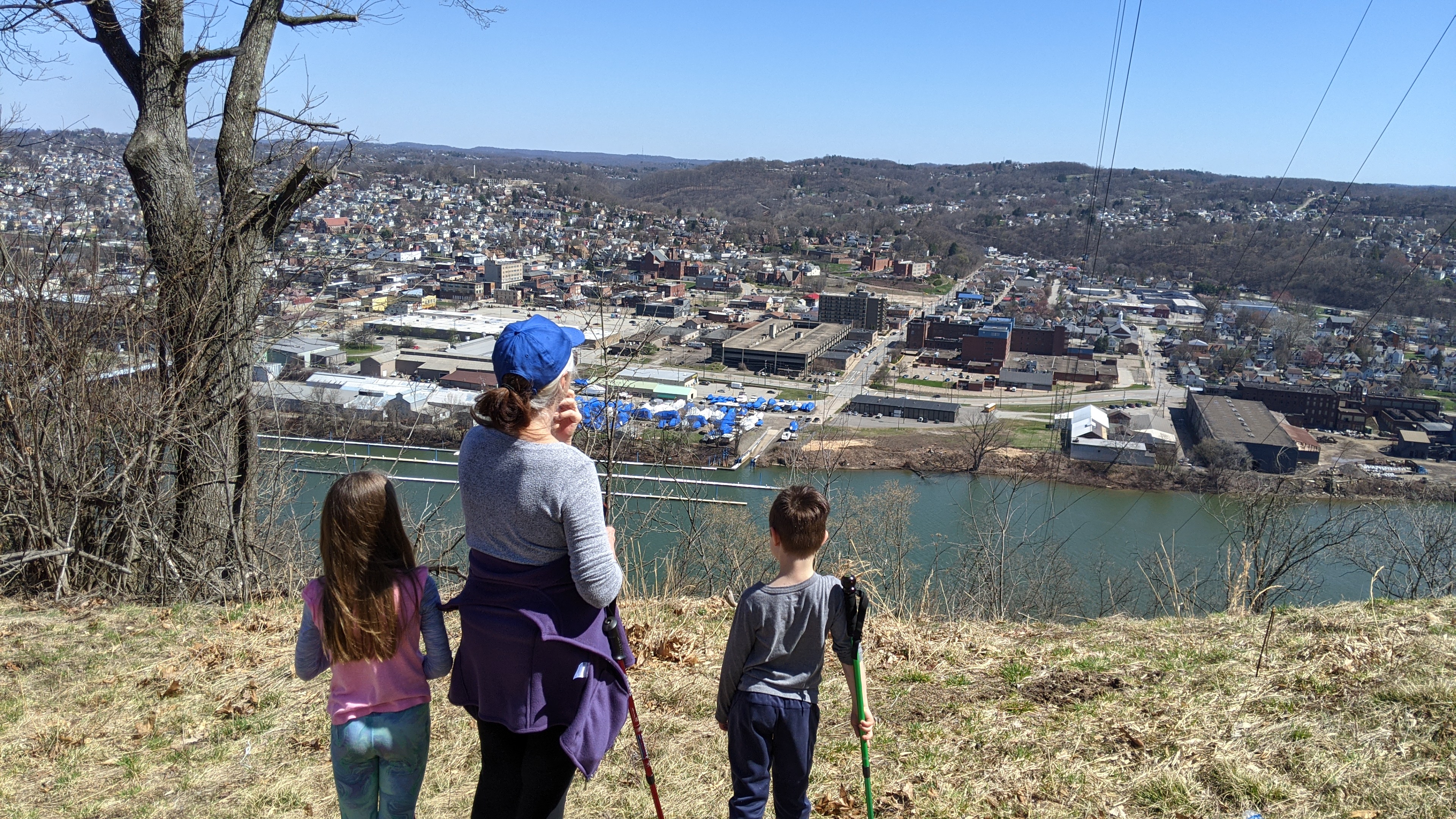 Overlooking New Kensington  On a carpet of leaves |
  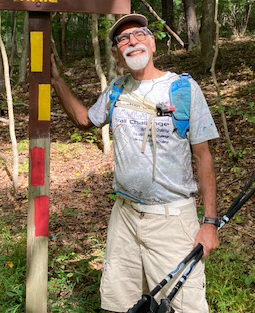 Bob Reiland |  | How I Got Involved By Bob Reiland In early May 2016 I happened to be hiking with someone in Prince Gallitzin State Park in central PA, and I began to think about trails and wondered about how they were built and maintained. I was recently retired and looking for volunteer work of some sort. Since I’d been a distance runner for a long time and also enjoyed walking though the woods, outdoor work was particularly appealing to me. At the time I didn’t know much about the trails near where I lived but eventually did some research and found the website for the Rachel Carson Trails Conservancy (RCTC) and used it to contact Donna Stolz about the possibility of volunteering to help maintain the Rachel Carson Trail (RCT). She responded two days before the annual Rachel Carson Trail Challenge and wrote that volunteers are always needed for the event. She provided a link to the volunteer roster that listed the course checkpoints and the volunteer roles at each of them.
I determined the nearest checkpoint to where I live was at Shaffer Run Road and found that the only opening left there was for a Water Marshal. I signed up for it even though I didn’t know what a water marshal might be, but just in case, I bought a large container and filled it with water before going to the checkpoint. Ordinarily this would have been a waste of effort, as by that late date arrangements had already been made for plenty of water to be provided, but in this case the water buffalo truck was running a little late, and the water I was able to provide was in fact helpful.
Most of what I did at the Challenge was to fill water bottles and hydration bladders for the tired hikers coming through on that hot day, and I have never been thanked so sincerely and by so many people before or since. I also decided that I’d be crazy to ever attempt what these dedicated hikers were doing.
The next step in volunteering was to adopt a section of the Rachel Carson Trail to maintain. I chose the Lefever Hill section as one without a trail steward, and Mark Eyerman met me with a set of tools, showed me the section and demonstrated the use of tools and the process for blazing.
The following year I again volunteered to help at the RCT Challenge, and over my first two years with the RCTC, I helped with new routes and reroutes on the RCT and on the Baker Trail. I also met George Bender at one of the Barb Peterson Memorial Hikes, and he invited me to join a group that hikes on Saturdays all year. One of the other leaders of this group was Doug MacPhail. At that time Doug was a member of the RCTC Board, and after getting my reluctant permission, he nominated me for a position on the RCTC Board. I really didn’t know what I was getting into and felt a little inadequate as I soon learned how much the experienced Board members regularly contributed to normal operations and ongoing improvements of the RCTC. They proved to be really welcoming to this new member and I soon learned that they had something in mind for what was to be my major contribution to the Board.
Each year in May we have Board elections for president, vice-president, treasurer and recording secretary. At the end of the May meeting of 2019 I was surprised to find that I’d been elected Board President. Advancement can happen quickly in this organization! After serving two one-year terms I chose to nominate Betsy Monroe for the office of Board President, and she accepted and was elected. Now I continue to serve on the Board and on three of the RCTC committees as well as continuing work as a trail steward.
In addition to becoming more involved with RCTC work, joining George, Doug and others for regular hiking on Saturdays convinced me that I could complete the RCT Challenge, and I did so in 2018, 2019 and this year in 2021.
Finally, those of us who volunteer for trail work, whether or not we are maintaining sections of our trails, have been especially busy in improving existing parts of our trails and making use of property acquisitions to improve hiking experiences with reroutes. This might sound like a lot of work, but everyone I’ve known who has volunteered for such work has greatly enjoyed it.
In addition to what I’ve done there are many other opportunities for volunteers to help our wonderful organization. Please consider reaching out to Donna Stolz, our Volunteer Coordinator if you want to learn more about what you can do to help. |
  | |
 | | |
| |
|